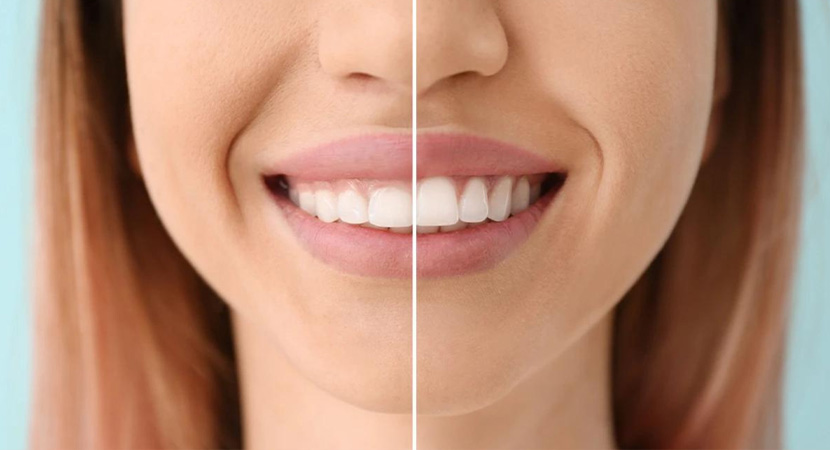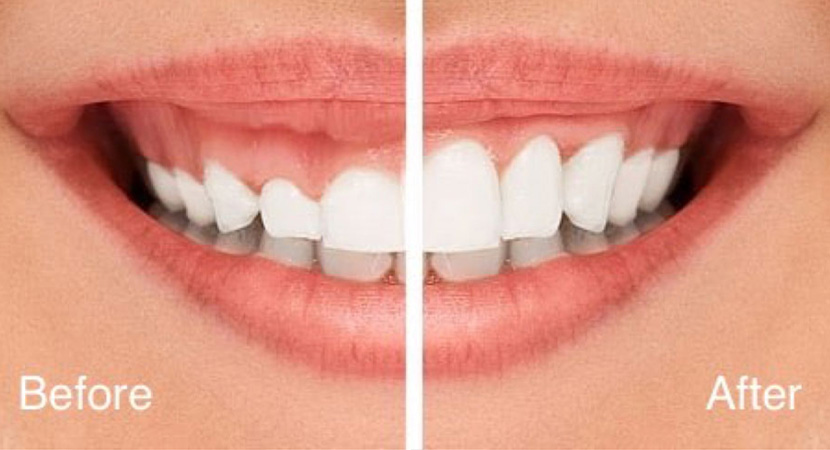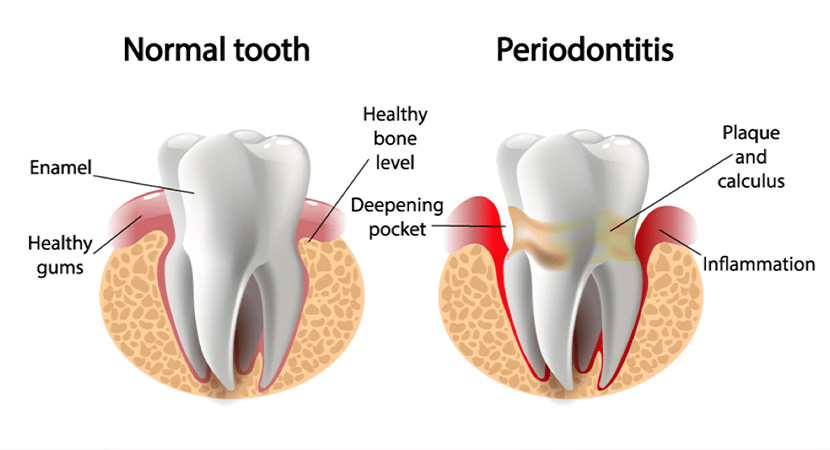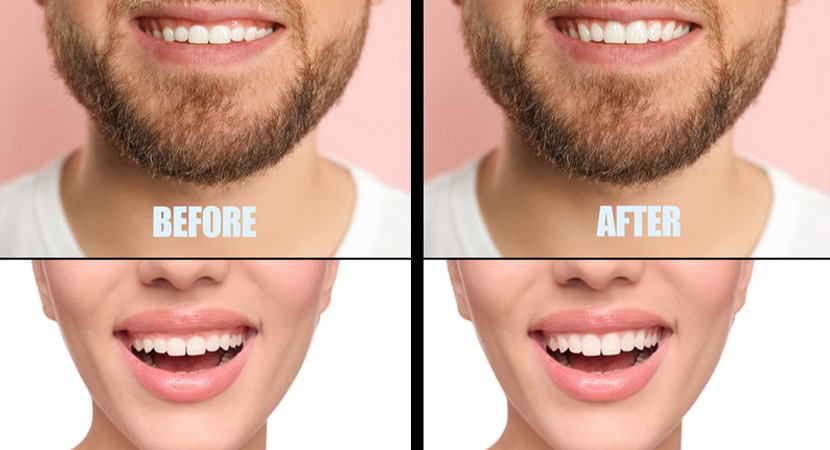
Gingivectomy
Overview
Periodontal disease affects approximately 47.2% of Americans aged 30 and older. (Also known as gum disease). Gingivectomy can be used to treat periodontal disease or to address issues with the gums, including the structures surrounding the teeth. This is one of the few treatments that can assist in the management of periodontal disease. Keep reading to learn more about the procedure, how it's performed, and whether it's a viable treatment option for restoring the health of your smile and gums.

What is Gingivectomy?
The surgical removal of the gum tissue is known as Gingivectomy (gingival tissue). When the gums have receded from the teeth, creating deep pockets, Gingivectomy is necessary. Plaque and tartar are difficult to remove due to the pockets. Gingivectomy is usually performed before the gum disease has damaged the bone that supports the teeth.
To eliminate the pockets between the teeth and gums, the loose, unhealthy gum tissue is removed and reshaped. Gingivectomy provides visibility and access for the removal of tartar and complete smoothing of the tooth roots by removing the walls of the pocket. This creates a favorable environment for gum treatment and restoration of the gingival contour. Although Gingivectomy was initially created for the treatment of periodontal disease, it is now widely used for cosmetic purposes. It is used to remove excessive gum tissue and enhance the appearance of the gumline.
Gingivoplasty is another term for periodontal surgery. Gingivoplasty differs from Gingivectomy in that the former involves only partial reshaping of the gums (plasty), while the latter eliminates the entire visible area of the gum tissue.

What is Periodontitis and how does it develop?
Periodontitis begins when bacteria in the mouth adhere to the teeth. The bacteria accumulate and grow, forming a biofilm known as plaque. If plaque is allowed to build up on the teeth, the nearby gum tissues can become irritated, leading to gingivitis, an early form of gum disease. Daily flossing and brushing twice a day with bacteria-fighting toothpaste can help prevent gingivitis. Oral hygiene techniques remove plaque and food debris, clean the tooth surfaces, and eliminate bacterial plaque at the gumline.
However, if plaque and food debris are not removed, and oral hygiene practices are not followed, gingivitis worsens, and the gum tissue becomes more inflamed, leading to bleeding. The area between the tooth and gum tissue deepens, forming a periodontal pocket, and periodontitis develops.
As plaque bacteria accumulate and travel beneath the gumline, a periodontal pocket forms. At this stage, home care is insufficient to eradicate dental plaque. If left untreated, the biofilm will extend beneath the gumline and infect the interior of the pocket. This severe form of periodontal disease can damage the tooth roots and cause them to become infected. Teeth may become loose or painful, necessitating gum surgery. At this time, your dentist may tell you that you need a Gingivectomy.
Who should undergo Gingivectomy and what are the expected results?
Patients with gingivitis are good candidates for a Gingivectomy. The development of plaques, caused by microorganisms, characterizes this condition. Over time, the plaque hardens and forms tartar or dental calculus. The gum becomes irritated, and the attachment around the tooth loosens. Tartar cannot be eliminated through brushing or flossing in its advanced form. Bleeding is another possibility. Gingivectomy is recommended if the condition does not improve after manual comprehensive cleaning, known as scaling and root planing. This involves scraping off the plaque and smoothing the tooth.
Patients with periodontitis can also benefit from a Gingivectomy. This condition is caused by a bacterial infection, which inflames the gums. If left untreated, periodontitis often leads to tooth loss and damage to the underlying bone structure. Under certain circumstances, the gums can become so infected that antibiotics alone will not cure it.
Gingivectomy is a relatively safe procedure often performed in a dental clinic. It also has a high success rate and satisfaction. To encourage recovery, the patient is often advised to rest for a few days. A soft food diet is also recommended after a Gingivectomy.
The process is carried out in only one quadrant at a time. For people with significant tartar buildup, multiple Gingivectomy treatments may be needed to complete therapy. Antibiotics are also applied to the patient to prevent infection. Regular dental check-ups are also essential for monitoring and preventing additional tartar buildup. Oral hygiene should be practiced at all times.
This surgery also helps prevent tooth loss and preserves the underlying bone structure. Tissue healing and superficial epithelial development occur within a few days.
Contraindications for Gingivectomy
The patient's smile is influenced by dental/gingival morphological characteristics and perioral factors. They are crucial for ensuring predictable and successful smile rehabilitation for the patient.
The typical vertical height of the maxillary central incisors in boys and girls is 10.6 mm and 9.8 mm, respectively. The average maxillary display with the lip line at rest is 1.91 mm for men and 3.40 mm for women (almost double). Recent studies confirm statistically significant sexual dimorphism regarding the height of the visible maxillary incisor crown at rest.
Research also clearly shows that female patients have larger smile lines, while male patients have lower smile lines. A high smile line reveals the entire crown of the tooth as well as an abundance of gingiva. As a result, some people may subjectively perceive this operation because some degree of gingival display may be visually pleasing and considered youthful, and vice versa.
Furthermore, the harmony of the gingival contour between the front and back may be disrupted. While smiling, some people are more likely to show the maxillary teeth from the second premolar on one side to the second premolar on the other side. Consequently, under certain circumstances, all teeth between the first bicuspids are included in the operation, especially in cases of surgical crown lengthening to generate aesthetically acceptable gingival architecture that harmoniously combines the gingival contours of the maxillary anterior and posterior teeth. Additionally, "black triangles" are more likely to form in regions with labial or interproximal soft tissue recession. This leads to the anticipated consequence.

How is the procedure performed?
Before the surgery, the patient should undergo scaling and root planning to remove as much plaque as possible. Gingivectomy can be performed in various ways. All approaches involve the use of local anesthesia to make the process as painless as possible for the patient.
The dentist begins the surgical Gingivectomy by examining the pockets formed by loose gingival tissue. These pockets are also identified. To evaluate the tooth and underlying bone structure, small incisions are made in the gingiva. To expose the tooth root, the gingival flap is pushed away from the tooth. Then, the diseased gingival tissue is removed to the border of healthy tissue.
Subsequently, a curette is used to remove granulation tissue. Any buildup of deep tartar is also removed with the same instrument. The surgical site is cleaned with sterile saline solution and gauze is applied. Periodontal dressing is placed over the incision once the dentist is confident that all unhealthy gingival tissue has been removed, and bleeding has stopped. This surgical dressing promotes tissue regeneration and healing.
During a Gingivectomy, some dentists prefer to use lasers. Carbon dioxide or Nd:YAG lasers can be used to precisely cut unhealthy gingival tissue. The laser beams can also seal any damaged blood vessels, reducing the risk of bleeding. This is the most precise method, ensuring complete destruction of bacteria.
Electrosurgery is another method used in Gingivectomy. To transfer thermal energy to the gingival tissue, the dentist uses high-frequency electrical current. This initiates the drying process, which continues until all tissues are dried out. Cells degrade, and unhealthy gingival tissue is removed. However, this method lacks the precision and effectiveness of the laser.
Caustic chemicals known to break down cells are also used in Gingivectomy. Chemical cautery is a technique proven to be useful in removing gingival pockets. Chemicals used include phenol and paraformaldehyde. A downside is that the method is extremely painful, even with local anesthesia.
This technique can also be performed using cryosurgery. Temperatures ranging from -50 to -60 degrees Celsius are introduced into the gingival pocket using a probe. Subzero temperatures cause cell death and necrosis. Subsequently, a scalpel is used to remove the unhealthy tissue.
Which is better: Laser Gingivectomy vs. Scalpel?
Technological advancements in lasers have led to a more effective surgical alternative, especially for oral treatment. The laser allows dentists to perform more precise work. Due to cauterization, Gingivectomies performed with lasers heal faster and reduce the risk of infection.
What care is needed after Gingivectomy?
Most patients can resume their regular dental care routine within a month after the operation. Routine dental or periodontal check-ups will ensure the procedure's success. The dental expert who performed the surgery will likely schedule three-month appointments, followed by at least biannual preventive health visits for cleaning in and around the surgical site.

Recovery and Postoperative Care
You'll likely experience swelling and bleeding after the surgery. This is entirely normal, but doctors will advise you on how to speed up the healing process. You may experience some discomfort for a few hours after the anesthesia wears off. Again, this is normal, and over-the-counter pain relievers will help.
Since only local anesthesia will be used, you should be able to return home immediately.
If you're still unclear about the instructions given to you, contact the clinic for assistance.
Brushing, flossing, and rinsing your mouth should be avoided for the first 24 hours after treatment. After this initial interval, you can resume your usual dental routine in parts of your mouth that were not affected by the Gingivectomy. After 48 hours, rinse with saltwater to keep your gums clean and help them recover faster.
Avoid touching the wounded area during the first week of treatment. This includes no contact with fingers or tongue, and refraining from forcing your lips to open to look at it.
What is the difference between Gingivectomy and Gingivoplasty procedures?
Gingivectomy and gingivoplasty, also known as gum contouring and gum sculpting, are sometimes used interchangeably, as they are often performed together. However, the two procedures differ to some extent.
Gingivectomy is the surgical removal of unhealthy gum tissue. Gingivoplasty is often used to reshape otherwise healthy gum tissue and eliminate a gummy smile. However, one treatment is rarely performed without the other.
How long does it take to recover after a Gingivectomy?
This procedure begins with an anesthetic gel applied to the gum tissue (without injections) and ends with a soft tissue laser that quickly and effectively reshapes or removes the gum tissue. Laser treatment is almost instantaneous, with little or no postoperative sensitivity, and the tissue usually returns to its original shape within 3 to 5 days, resolving the gum issue at hand. While with other methods, a repeat procedure may be required for additional bacterial removal or gum reshaping.
Use dental floss and a toothbrush with gentle bristles to maintain adequate oral hygiene. To promote tissue development, rinse with an antimicrobial mouthwash. After the procedure, you will be prescribed a specific model and number of toothbrush, specially designed for use after such surgical intervention.
What to expect?
Once the anesthesia wears off, you can resume your daily activities. Gum tissue typically heals within a few days or weeks. The shape of your gums may change.
Most gum surgery procedures are simple and fairly painless. To alleviate discomfort, you can take ibuprofen (Advil or Motrin) or acetaminophen (Tylenol). Take precautions when handling medication. Read and follow all instructions on the label. It will be easier for you to keep your teeth and gums clean after Gingivectomy.
Possible Risks and Complications
Gingivectomy is associated with the following risks and complications:
• Bleeding, which may occur during and after the procedure
• Pain and swelling of the gums
• Infection at the site of surgery. In rare cases, the infection can spread into the bloodstream and cause sepsis.
• Blood blister
• Patients undergoing electrocautery may experience bone necrosis.
• Abscess in the periodontal area
• When using electric current or chemicals, they may damage surrounding healthy tissue (other methods excluding laser).
• Damage to nearby nerves
• Sensitivity of teeth to cold temperature
• Recurrence of plaque buildup, especially if the diseased gum tissue is not completely removed
Conclusion
Surgical removal of gingiva or gum tissue, known as Gingivectomy, is utilized for treating gum diseases and eliminating deep pockets that form when the gums detach from the teeth. The procedure involves the removal of gingival abnormalities, leading to an improved gingival contour. Most cases of gummy smiles can be surgically addressed by removing 1 to 2 millimeters of gingival tissue. The surgical approach allows for incisions to be made using a standard scalpel, electrocautery (electric scalpel), and high-frequency lasers, depending on the treatment plan and the harmony between the patient and the professional in each situation.
In our clinic, all types of gingival surgeries are performed exclusively with state-of-the-art laser equipment.


